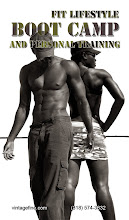There's a reason most restaurants keep the kitchen doors closed -- and it's not just because it's so hot back there.
It can be tough for restaurateurs to turn a profit and Slashfood has uncovered some of the ultra-dirty deeds even the best restaurants commit in order to pinch pennies.
Read on for 10 true stories about the subtle, sneaky and sometimes downright disgusting ways restaurants cheat to save a buck -- and how you might be paying the price.
10. Using Cabbage in Place of Seaweed
Says a former maître d' at an expensive Chinese restaurant known for its celebrity clientele: "The owner figured his customers knew nothing about Chinese food (he was right) and was a genius at saving money. A specialty supplier used to provide edible seaweed for the popular seaweed appetizer, but when that got too expensive the boss began experimenting.
"The 'seaweed' on the menu ended up becoming thin strips of cabbage leaf, deep-fried, and then rolled in equal amounts of salt and sugar. It's possible even cardboard would taste good if prepared like that, but the dish remained a bestseller."
9. Deep-Frying Everything
But that's not all! At the same celebrity-friendly restaurant: "In addition to the 'Chinese seaweed,' the other two most popular dishes on the menu were a 'Mongolian lamb' main course and caramelized banana dessert," the insider says.
"Often a diner would order all three, and not realize that every item was cooked in exactly the same deep-fry basket. Although the restaurant denied the lamb was fried, in fact the cabbage (ahem, 'seaweed'), lamb shank and sugared banana would all go into the same oil."
8. Substituting Top-Shelf Alcohol with Generic Booze
One of the most common scams at restaurant bars is to replace premium vodka with generic brands, subscribing to the theory that most customers can't tell the difference. (We know of one restaurant which even did that with Scotch, but experienced whiskey drinkers could often tell and the scam was not so effective.)
A New York City bartender says, "The way of doing that is to start them on the bad vodka right away. You can't sub it in once they started drinking the top shelf brands or they'll notice. But if you serve the cheap stuff from the beginning they never know."
7. Topping Pitchers of Beer with Seltzer Water
Don't think the fiddling is restricted to top-shelf liquors, either. "In sports bars that sell pitchers of beers, the thing to do is to top the pitchers off with seltzer after the table has ordered like the third one," a source says. "The drunker the guys, the more seltzer they get."
6. Refilling Pricey Bottled Waters with Tap
It turns out not all water bottles are created equal. You might already suspect that some restaurants refill water bottles with tap water, but some places turn it into an art form. "Where I worked we served Voss water because it has the easiest screw top to re-seal," a waitress says. "You can't do that with the brands that have a bottle cap."
5. Recycling Baskets of Chips
One diner at a landmark cafe in Bethlehem, Pa., reported digging in to some bagel chips and finding they contained old pineapple rinds.
"Someone else got served the chips, didn't eat them all, threw their rinds from some other dish into the basket, the waiter picked it up without looking and threw more chips on top and re-served it to us," the customer claimed on an online ratings Web site. "Yeech!"
Management didn't seem to care and the patron says "they were trying to economize their chip ration, and it was probably standard practice to re-use uneaten chips."
4. Serving Rotten Meat
A steakhouse employee in New York says that sometimes not all the meat is as fresh as it should be. "It's an old trick to keep the steak that's past its prime and wait until somebody orders it well done or medium-well," the insider says. "The more you cook the meat, the more you disguise its flavor. When I'm eating out I never order anything higher than medium rare, because I know how the kitchen gets rid of bad meat."
3. Using Fake Creamer
A former waitress at an upscale restaurant in Philadelphia reports that one of the daily duties of staff was to mix a large pot of non-dairy, powdered creamer. When coffee or tea was ordered, the small milk jugs were to be filled halfway with fake creamer, and then topped off with the more expensive real milk.
2. Serving Caffeinated Coffee as Decaf
If your body has a problem with caffeine, it might be safer to make your own coffee at home. The same Philadelphia source also reports coming back to the kitchen with a cup of regular coffee when an elderly customer had requested decaf. "The head waiter took the cup from my hand, handed it right back to me and said, 'There -- now it's decaf,'" she says.
1. Souping Up Big Ticket Items
The most shocking story came from an internationally well-known West Coast restaurant -- trust us, you've heard of this place. Part of the shtick of this very fine-dining establishment is the presentation of a truffle at the table, so that customers have the opportunity to order some (super expensive) shavings to be added to their food. But while white truffles are more expensive than black truffles, their aroma is more subtle, meaning that they make less of an impression when presented during the sales pitch. "What the staff would do is add black truffle oil, which is more pungent, to the white truffle, to give it more 'pop,'" the insider says. "It's an absolute no-no to do, especially at those prices. But who's going to know?"
Monday, September 28, 2009
Subscribe to:
Post Comments (Atom)








No comments:
Post a Comment